Making Sense of Genesis 4-11
The First Murder, the First Civilisation, the Great Flood
The First Murder Chapter 4.1-16
In the musical ‘Oklahoma!’ there is a song, ‘The Farmer and the Cowman should be friends’. The song makes clear that they are anything but friends, and the same went for Cain and Abel. Cain was a farmer and Abel kept sheep. For some reason God accepted Abel’s sacrifice but not Cain’s, (how did they know?), and then gave Cain some very good advice on doing the right thing. “Sin is lurking at the door; its desire is for you, but you must master it.” (4.7) Cain ignored this and murdered Abel. When God asked him where Abel was, Cain uttered the famous phrase, “Am I my brother’s keeper?” (4.9) As punishment, God sent him into permanent exile.
The First Civilisation Chapter 4.17-24
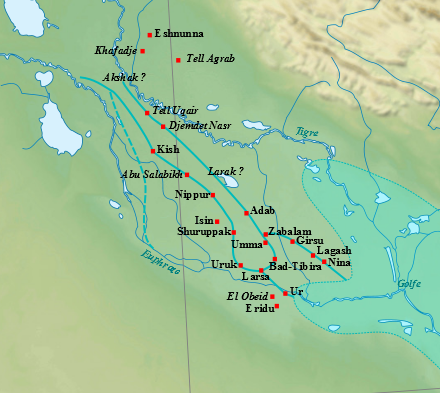
Cain, being exiled from the land, built the first city. We are then told of Cain’s next five generations: Enoch, Irad, Mehujael, Methushael and Lamech. Three of Lamech’s sons, three half-brothers, generated a more civilised lifestyle: living in tents to herd animals; playing harp and flute; and metal working in bronze and iron. Their father Lamech however shows the ongoing degradation of humankind: “I have killed a man for wounding me .. if Cain is avenged seven times, then Lamech seventy-seven times.” And so start blood feuds. “An eye for an eye” is mercy in comparison.
That seems to me to be followed naturally by Genesis 6.11: “Now the earth was corrupt in God’s sight, and the earth was filled with violence…” But first, some interruptions:
Who’s Who Chapter 4.25-26, 5.1-end
Adam and Eve had another son, Seth. It was only in the time of their grandson Enosh that “people began to invoke the name of Yahweh.” (4.26) What had they done before? Does this indicate establishing a religion complete with temples and priests?
Chapter 5 seems to begin a new, separate book, written by someone using the word ‘God’ or ‘Elohim’. “This is a list of the descendants of Adam.., he became the father of a son in his likeness … and named him Seth” (5.1,3). There follows a repetitious list of eight more generations. Many names are similar or identical with those of chapter 4, though in a different order: Cain/Kenan, Enoch/Enosh/Enoch, Irad/Jared, Methujael/Mahalalel, Methushael/Methusalah, Lamech. (Note: Enosh is another name for ‘man’ or ‘adam’ . This makes two almost identical lists). Finally Lamech has a son Noah, not mentioned in chapter 4. What is striking is the great age at which their eldest sons were conceived, and the very great age they died at. “When Seth had lived for one hundred and five years, he became the father of Enosh. Seth lived after the birth of Enosh for eight hundred and seven years…” (5.6-7). Famously, Methusaleh lived for 969 years.
Are these figures believable? Or are they symbolic of the reputation of these ancestors? We have ancient Sumerian king-lists from southern Iraq, where before the Flood reigns were numbered in multiples of 6,000 years, e.g. from Alulim (28,800 years) to Ubara-Tutu (18,600 years). After the Flood, when “the kingship had descended from heaven”, length of reigns went from Etana (1,500 years) to Aga of Kish (625 years). But none of them approach the prayer for the king of Israel in Psalm 72.5: ‘May he live while the sun endures, and as long as the moon, throughout all generations.’
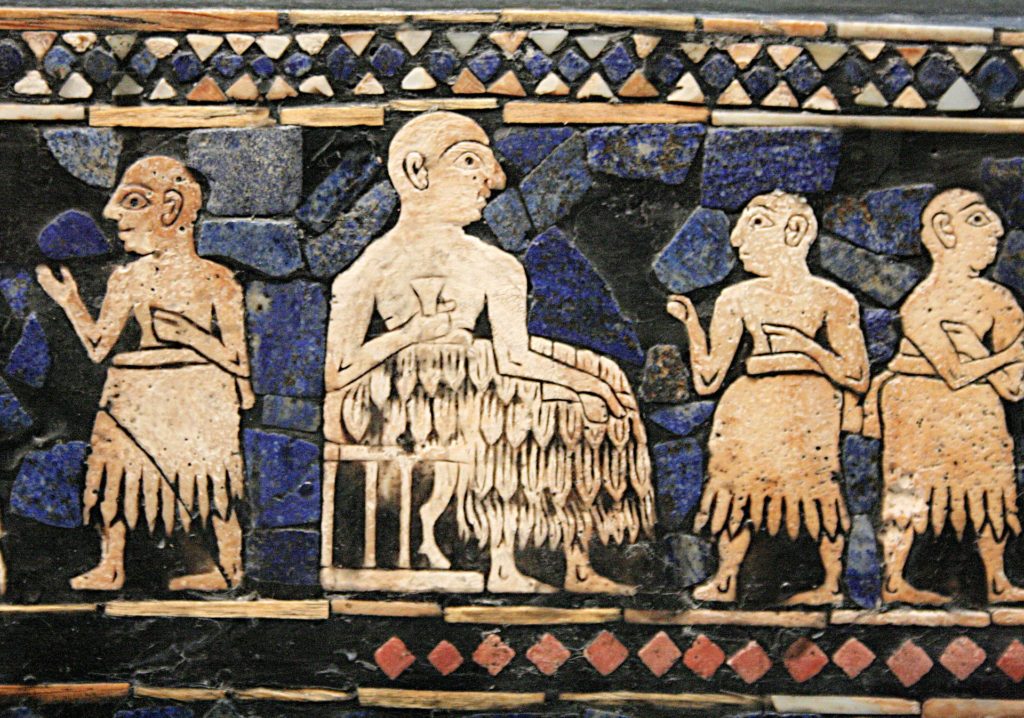
The Nephilim Chapter 6.1-4
We next come to the weirdest passage in the entire Bible, Genesis 6.1-4, in which we hear about the sons of God. These seem to be junior gods, part of Yahweh’s heavenly court. ‘One day the sons of God came to present themselves before the LORD, and Satan also came among them.’ (Job 1.6)
In Genesis 6 the sons of God take a fancy to the young women on earth, marry them and have children ‘These were the heroes that were of old, warriors of renown’ (6.4). Is this like Hercules, Perseus, Minos and Helen of Troy, all results of the various amorous exploits of Zeus? And who were the Nephilim? Is this another name for a semi-divine race of heroes? Or giants? When Moses sent spies to check out the promised land, the disquieting report that came back said, “The land that we have gone through as spies is a land that devours its inhabitants; and all the people that we saw in it are of great size. There we saw the Nephilim (the Anakites come from the Nephilim); and to ourselves we seemed like grasshoppers, and so we seemed to them.” (Numbers 13.33)
Why not challenge your priest or vicar or minister to preach on this next Sunday?
The Flood Chapters 6.5 – 9.17
In 1929 Leonard Woolley was conducing a large archaeological expedition at the ancient Sumerian city of Ur, southern Iraq. A thick alluvial deposit was unearthed deep below the modern surface. The foreman protested that it was pointless to dig deeper. “I told the man to go back and go on digging. Most unwillingly he did so, again turning up nothing but clean soil. He dug through eight feet of it in all and then, suddenly, there appeared flint implements and fragments of painted al-Ubaid pottery vessels … I brought up two of my staff .. and asked for their explanation. They did not know what to say. My wife (also an archaeologist) … was asked the same question, and she turned away, remarking casually, ”Well, of course, it’s the flood.” (Legend p.168)
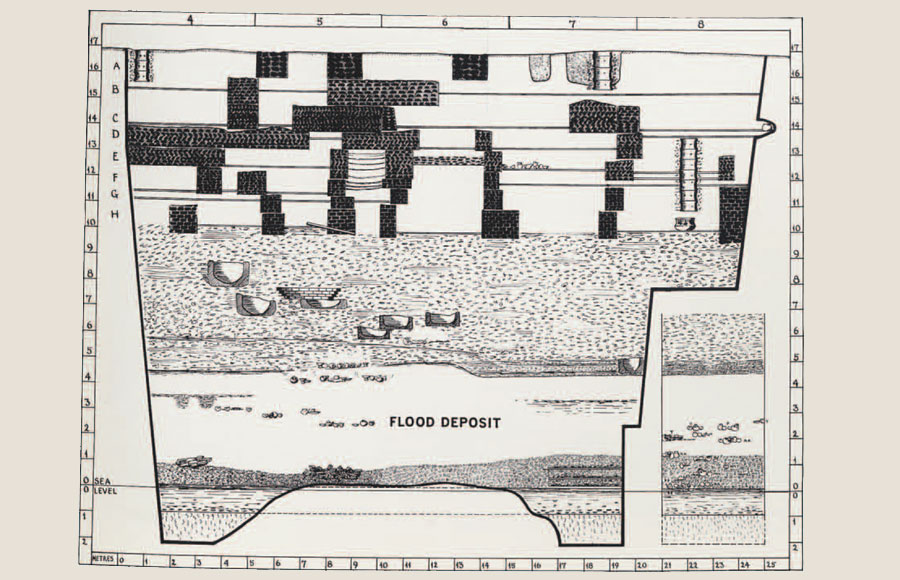
There are numerous stories about a great flood in the ancient world, in which one man is rescued by being told by the gods to build a boat or raft. The hero has various names, Ziusudra or Atrahais (Sumer), Utnapishtim (in the epic of Gilgamesh) and Deucalion (Greece). There was certainly a flood in southern Mesopotamia. There may have been one which created the present Black Sea. Both owed have been devastating to the early human communities
The story of Noah and the flood is one of the great stories of the world, often enacted children’s programme, but it actually describes a world-wide catastrophe and the extermination of virtually all land-based life on earth. But if you look at the story attentively, you can see that it is two stories woven into one, probably two separate written accounts. The two names for God are used in different places. In one account seven pairs of clean animals and of birds are brought in, in the other it is pairs of all animals. In one the flood lasts from forty to sixty one days, in the other 150 days. My guess is that one account was written in Jerusalem in Judah and the other in Samaria in Israel. They would have brought together either in Jerusalem in the 7th century BCE or during the exile in Babylon. Here is how the two accounts match up:
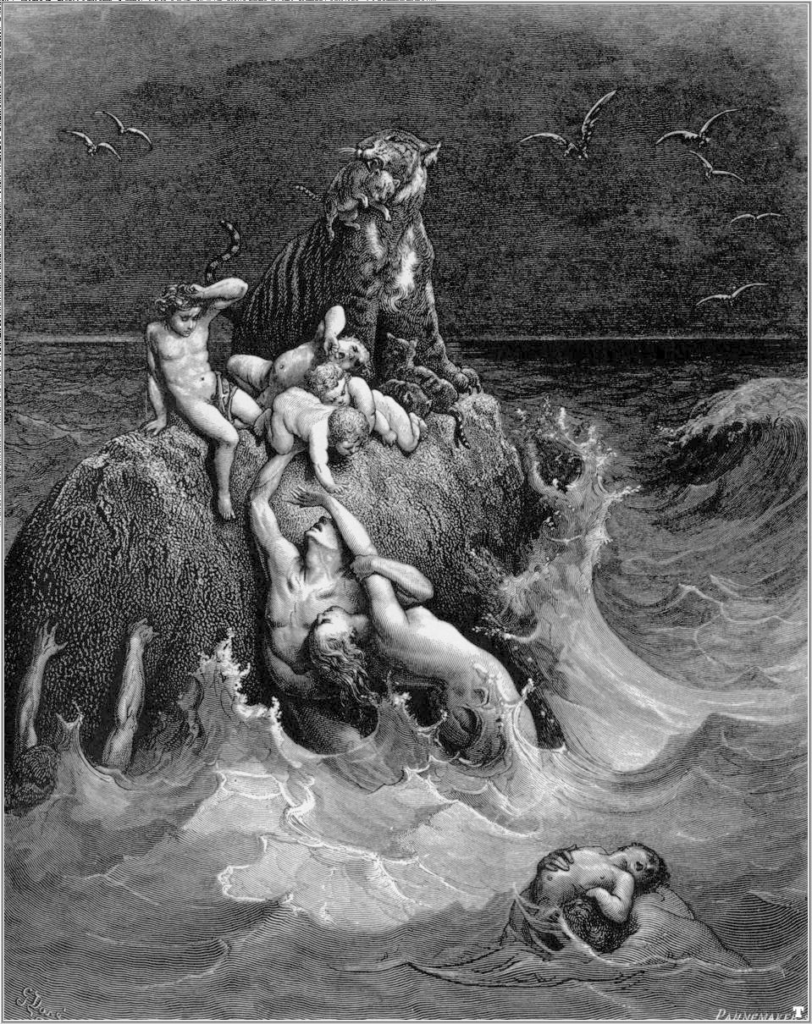
Judah:
- Yahweh sees that mankind is wicked and decides to blot it from the earth (6.6)
- Yahweh tells Noah to bring seven pairs of all clean animals and birds and pairs of other animals. (7.2-3)
- Yahweh says he will send rain for forty days and forty nights. (7.4)
- After seven days Noah sends out a raven, followed at three intervals of seven days by a dove, who does not return on the last occasion. (8.6-12)
- Noah builds an altar to Yahweh and offers burnt-offerings of clean animals. (8.20)
- Yahweh says, “I will never again curse the ground because of mankind (8.21), and promises that “seedtime and harvest, cold and heat, summer and winter, day and night, shall not cease.” (8.22)
Israel:
- Elohim sees that the earth is corrupt, and that the earth is filled with violence. (6.11)
- Elohim tells Noah to make an ark, to bring two of all animals, birds and creeping things into the ark. (6.19-20)
- Elohim closes up the ark with Noah and his family inside. (7.15)
- All the fountains of the great deep burst forth and the windows of the heavens are opened, i.e. the dividing of the waters on day two of creation (1.6) is reversed, bringing about the primeval watery chaos. (7.11)
- The waters swell for one hundred and fifty days. (7.24)
- Elohim makes a wind blow over the earth and closes up the fountains of the deep and the windows of heaven, see Genesis 1.2. (8.1-2)
- Elohim tells Noah to leave the ark. (8.15)
- Elohim says that all animals will fear humans. (9.2)
- Elohim says you shall not eat flesh with the blood in it., or kill a fellow-human. (9.4,5)
- Elohim provides a rainbow as a covenant that there will never again be a flood to destroy the earth. (9.8-17)
What does it mean? That depends on whether you think that God the LORD deliberately killed almost all life, or that he was a bystander of natural events, but working within them to bring about a new start. Modern science has given us a very different mind-set from former ages. We are able to trace a whole network of natural causes and effects, with events like tsunamis basically without meaning. Formerly people had little understanding of secondary causes, so everything was ascribed to the will of God, and life was meaningful. The stories of the flood raise questions of God and suffering, of life and death. Do they hint at an answer?
Noah gets drunk Chapter 9.18-28
The next story is one of inebriation and indecent exposure.
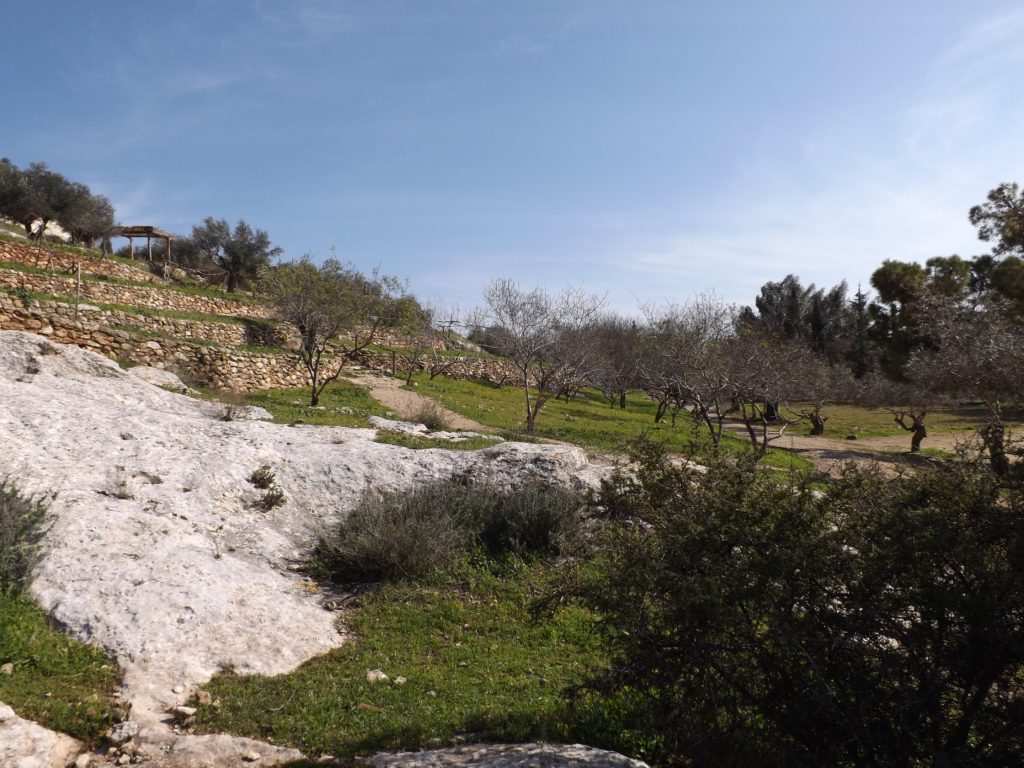
Noah was very inventive and started the cultivation of vines and grapes. Presumably he had to wait three years before he could harvest them and ferment them. (The oldest brewery yet found in Israel is near Haifa and is 13,000 years old). The result of his enjoyable day drinking was that he passed out in his tent and exposed his private parts. His son Ham saw this and told his two brothers, Shem and Japheth, who respectfully covered him up. (It did not stop Noah from living a further 350 years).
So Noah cursed Ham for disrespecting him: “Cursed be Canaan; lowest of slaves shall he be to his brothers.” (9.25) Since Ham’s son was Canaan, it was all right for the Hebrews, descendants of Shem, to take over the land of Canaan and kill/enslave its inhabitants.
The peoples of the world Chapter 10
Chapter 10 gives the descendants of Shem, Japheth and Ham, but not as a genealogy. What it gives is a political picture of the ancient world. It is pretty confused, probably because it marries two separate lists. Most of the 89 names are entirely obscure, but several are well known: Ashkenaz (Europe), Tarshish (southern Spain), Kittim (Greeks), Egypt, Canaan, Sheba, Babel (Babylon), Assyria (twice), Nineveh, Caphtor (Crete), Philistines, Sidon, Jebusites (Jerusalem), Amorites, Eber (Hebrews), Elam (southern Iraq), Aram (Syria), Mesha (Moab).
There is one intriguing name: ‘Nimrod was the first on earth to become a mighty warrior. He was a mighty hunter before the Lord; The beginning of his kingdom was Babel … in the land of Shinar (Mesopotamia). From that land he went into Assyria, and built Nineveh …’ (10.8-11). He could be the same as the Sumerian hero Enmerkar. If you leave out the vowels, as Hebrew does, you get n-m-r, and ‘kar‘ means ‘hunter’ – Nimru the hunter. It’s possible.
Each list of the descendants of Noah’s three sons concludes with the statement: ‘These are the descendants of Japheth/Ham/Shem, by their families, their languages, their lands, and their nations.’ (10.5, 20, 31)
What is striking is the world-wide view of the nations. It could almost be a commentary on St Paul’s speech to Athenian citizens in Acts 17.26: ‘From one ancestor he made all nations to inhabit the whole earth, and he allotted the times of their existence and the boundaries of the places where they would live.’

The Tower of Babel Chapter 11.1-9
The story of the Tower of Babel seems to reflect very ancient stories. In one saga, ‘Enmerkar and the Lord of Aratta’ written down about 2,100 BCE, Enmerkar founded the first city, Eridu in the very south of Iraq and built a ziggurat, a brick mountain as home to the city’s goddess Innana.; he threatened war in order to beautify the temple. Such towers, or brick mountains, were central to the life and worship of the cities of Mesopotamia for the next three thousand years. The ziggurat at Babylon at the time of the Jewish exile was particularly splendid, a sparkling maountain of coloured, glazed tiles.
In Genesis 11, Yahweh is concerned about the rapid development of city life and decides to slow things down. He confuses their language and the people disperse. Could this be a memory of the spread of small city states in Mesopotamia, each with their own god or goddess, and their own ziggurat temple? Did religion then become a source of division rather than unity? What might God think about that?
From Shem to Abram Chapter 11.10-32
We now come to the prelude to the story of Abram, a genealogy of nine generations from Shem. This is repeated by St Luke in his gospel in the genealogy of Jesus, Luke 3.34-38. Lifespans steadily reduced over this period, from that of Shem, six hundred years, to Abraham’s father Terah, two hundred and five years.
Terah is a key figure in the story. He has three sons, Abram, Nahor and Haran, but Haran died before Terah. His son Lot became part of Abram’s household, and his daughter married Nahor, the father of Laban whom we will meet later in the story of Isaac. Terah left the southern city of Ur with his whole family, intending to travel to Canaan. But he stoped halfway, settled at the northern city of Haran, and died there. At this point the story of Abram, (later Abraham), begins.

Reconstruction of the boat quay at Eridu http://taisartlife.ru, public domain, wikimedia
